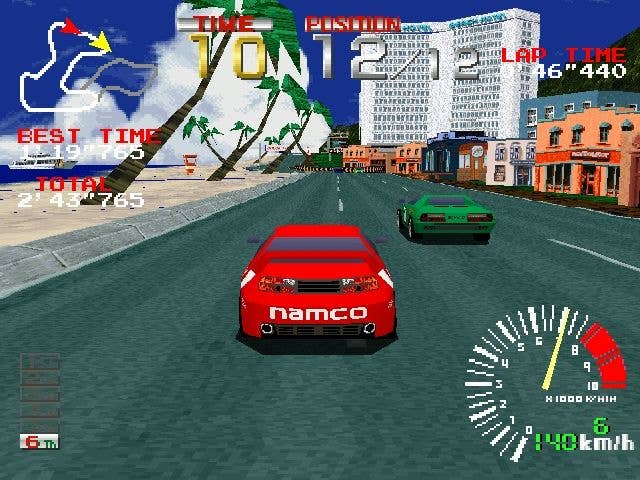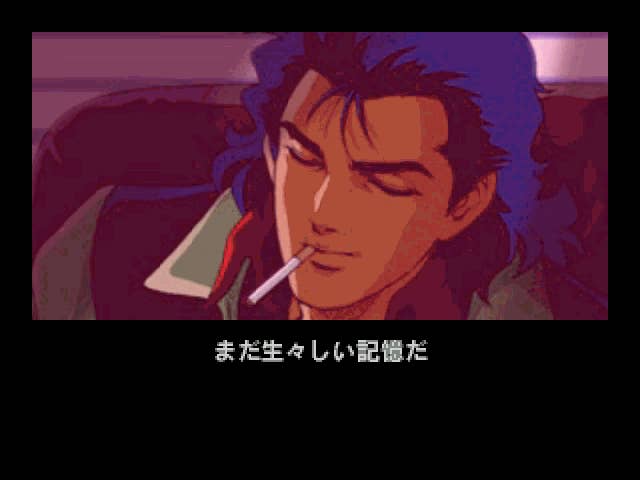Last week marked 30 years since the PlayStation launched in Europe. Shuhei Yoshida had an intimate look from the inside.
Yoshida began working for Sony in the 1980s, but joined the PlayStation group in February 1993, eventually becoming president of SIE Worldwide Studios. In the early days of his work on the console, he recalls how Ken Kutaragi – then head of the PlayStation group – invited him to play on the original PlayStation prototype, which designed as a CD-ROM companion for Nintendo's Super NES..
“He had a few final working prototypes,” Yoshida recalls. “The system was already ready and almost ready for production, and several games were already ready. I played one game that was a space shooter, but it was still based on Super Nintendo technology, right? So it was limited.”
He compares the system to the ill-fated Sega CD add-on for the Sega Genesis, which allowed huge amounts of data to be transferred directly from a CD, but was limited by the technical limitations of the 16-bit system. “It’s the idea, but it’s very limited compared to a real PlayStation,” says Yoshida.
“It was almost helpful that Nintendo canceled the project – otherwise the Sony team would have been stuck as part of the Nintendo system.”
At the 1991 Consumer Electronics Show, Nintendo publicly rejected by Sony as the manufacturer of the Super NES CD-ROM add-on, welcoming Philips as a partner instead. This betrayal eventually pushed Sony to create its own competing console.
“Nintendo has created a lot of competition for itself,” says Yoshida. “But competition is always healthy. “Right now, Xbox, Nintendo and PlayStation seem to be going in completely different directions, and I think that's great for the whole industry.”
These early Nintendo PlayStation prototypes are now incredibly rare. One of them was put up for auction in 2020 and sold for $300,000although the final total was $360,000, including “buyer's premium.” We also know that Kutaragi has at least one more Houses. However, Yoshida doesn't think Kutaragi will be in a rush to list it on eBay. “He’s already made some good money,” he laughs.
Enviable starting line-up
The launch of PlayStation in the US and Europe took place almost a year after the console debuted in Japan. “We only had a limited number of games to launch in Japan,” Yoshida recalls. “And of course we had the Ridge Racer – it was very popular in Japan and really helped spread the system.
“However, when it came out in the US and Europe in September 1995, there were many other great games out there. So all games made in Japan are […] plus European games from Psygnosis, [and America had] this assortment of sports games. So the composition of the games was much stronger.
“The main competitor we launched in Japan, even in the second year, was Sega Saturn. But because of the higher cost of goods – the Sega Saturn had two processors and all these extra components – we were able to lower the price of the PlayStation in the US, about a hundred dollars lower. It was devastating.
“We had a lot less competition and we had a better line-up of games. So I remember the launch in both the US and Europe went very well.”

But the European market was very different from the US or Japanese markets. “It’s very funny that when we had our quarterly senior management meeting where everyone gathered at headquarters in Japan, [Sony Computer Entertainment Europe president] Chris Dearing always said, “Well, the US market is so simple, you only have one country, but we have so many countries and we have to deal with very different distributions,” Yoshida says.
“It was very interesting to watch the competition between Team USA and Team Europe. They have always gone hand in hand in terms of number of installations.”
What about the Japanese parent company? How much control did Sony have over its guns in the US and Europe?
“In terms of control, of course, Ken Kutaragi was a really strong manager, almost dictating,” says Yoshida. “However, he had to let American and European management handle the marketing messages locally. Because it wasn’t like now with the Internet: any news coming from any region immediately spreads around the world.”
“Now the company only has one message because otherwise people get really confused. But when we launched in the 1990s, what each region did in terms of marketing campaigns or slogans could be very different. But that was okay. The leadership of each region took into account the user profile and culture of that region and came up with the right message for each region.”
Don't underestimate the power of PlayStation
Thirty years later, it's hard to believe that the blocky, barely textured graphics of the original PlayStation were once at the cutting edge of technology.
“When you look at the PS1 game graphics now, [you have to wonder] why we were so excited about it,” Yoshida says. “But for our brains it was incredible.”
The transition from 2D-16-bit consoles to the 3D worlds offered by the PlayStation was stunning, especially considering the enormous amounts of data storage offered by CDs (which offered about 660 MB of memory compared to about 4 MB for a Super NES cartridge).
Perhaps the most amazing thing to consider is how far we have come in such a short time. The PlayStation launched in Europe just 18 years after the debut of the Atari VCS, which looked downright prehistoric in comparison.
If we look back 18 years, we'll be right after the launch of the Xbox 360 and PS3, consoles that are functionally similar to the ones we have now. Graphics have improved over the decades, but it's unlikely that we'll ever again see the rapid, revolutionary progress that players saw in the early years of the PlayStation.
Overall, the 1995 launch went almost perfectly: a training exercise in how to get a new product into as many homes as possible. “We had the hardware, a good line of games, a good price, and a marketing campaign that I think was attractive to [a wide] audience,” Yoshida recalls.
“We tried to make games […] that adults could enjoy. And especially the European team did some really cool things with nightclubs and popular music. They made the brand cool.”

If he could go back now, the only thing he would change is that he would like to see more Japanese games reach Europe and the US.
“Due to limited retail space for both the European and American teams, they have not approved many Japanese games. Therefore, some Japanese games, especially from third parties, were not released in the US and Europe.” This decision ensured cult status for many games, such as Konami's Policenauts and Sammy's Deep Freeze, that had to be imported personally.
For all its glory, the 3D revolution came with some unfortunate casualties: In North America, 2D games like Panzer Bandit and Mega Man X3 were overlooked by the 3D craze. “I remember that 2D games were not approved for release in the US,” says Yoshida, “or at least that was the impression.”
Luckily, the world is back in love with 2D games, as evidenced by huge sales Hollow Knight: Silk Song just last month. But back in the 1990s, all anyone cared about was polygons – and who could blame them when PlayStation offered such a dramatic, generation-defining technological leap over what came before?


-cropped.jpg?width=1200&height=630&fit=crop&enable=upscale&auto=webp&w=150&resize=150,150&ssl=1)





